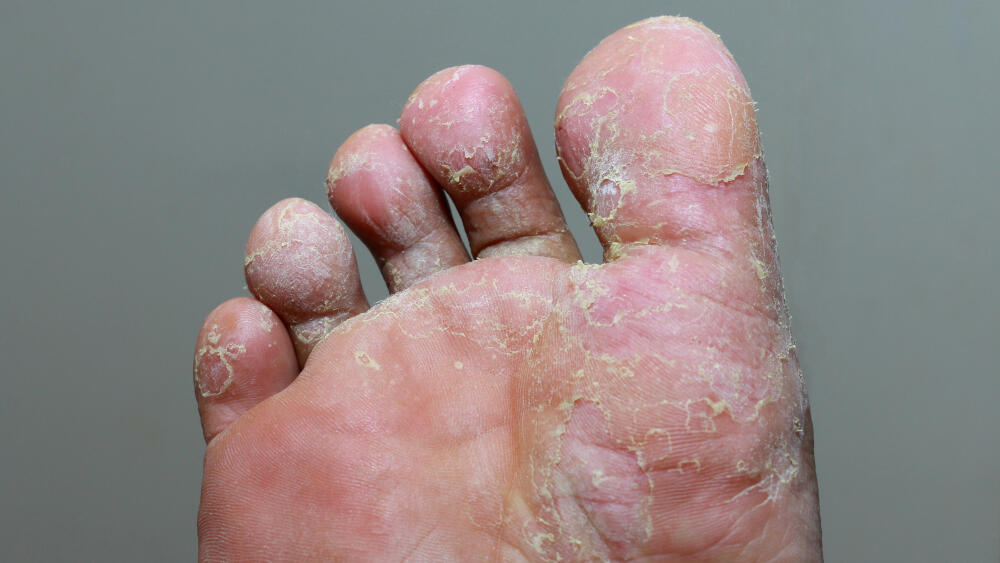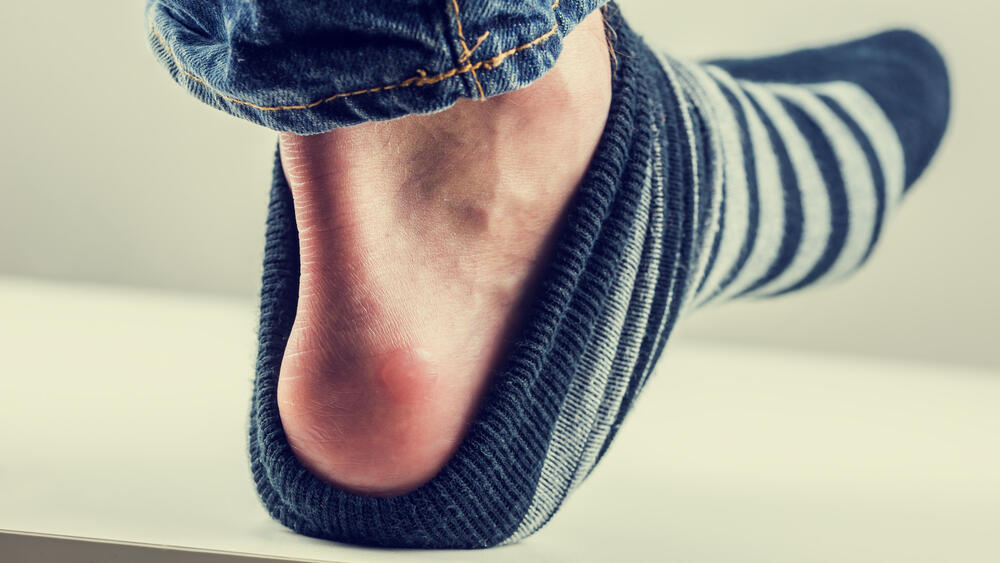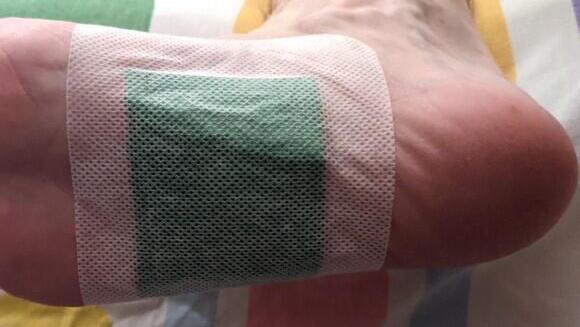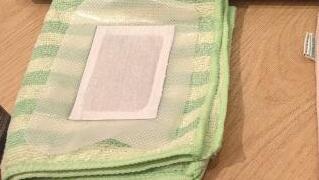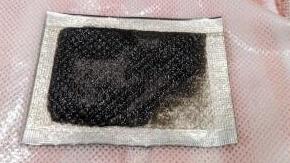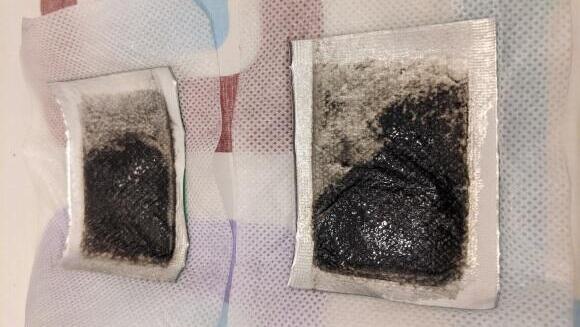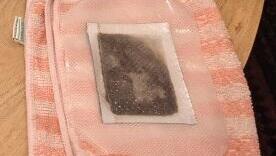A few days ago, while practicing languages on a mobile app, an ad for smart Japanese pads popped up. According to it, these are detox patches that should be placed on one's feet before going to bed, in order to remove toxins and waste that supposedly accumulate during sleep. In the video one can see how in the morning, after use, the pads turn from white to a disgusting greenish-black, just as we would imagine something that absorbs toxins would look like.
Since there is no evidence of the efficacy of non-medicinal detoxifying methods, I assumed that these pads, and similar products, are a scam. Nevertheless, the Davidson Institute decided to open its wallet to order a few such pads, so that I would be able to examine them closely. After testing and examination, it turned out that indeed - the lie has no legs - while the pads did change their color, it had nothing to do with toxins or with the drainage of “sediments and acids".
In everyday life we constantly encounter toxins. These can be protective substances found naturally in the plants that compose our salad, polluting particles emitted into the air by cars and factories, substances such as formaldehyde that form naturally in our body and more. The very definition of a substance as being ‘toxic’ or ‘non-toxic’ is problematic: any substance that is used at a large enough dosage, even water, can cause poisoning.
Fortunately for us, during the course of evolution we have acquired many mechanisms that take care of waste management, breakdown and neutralization of harmful substances and of the removal of toxins. During every visit to the toilet we excrete residues - either solid waste or substances excreted in our urine. The respiratory system also helps with the removal of certain toxins, such as alcohol or acetone.
The main organs responsible for the removal of toxins from our body are the liver and the kidneys. The liver neutralizes toxic substances prior to their excretion from the body, and the kidneys filter out water soluble toxic substances from the blood, to be removed alongside the excess water by the urine. As long as these organs are healthy they do not require any rest, cleaning or help, and if damaged or impaired, no water, juice, oxygen flow, enema or foot pads can help or replace them.
Nevertheless, marketers of detox foot patches, similar to marketers of other "detox" methods, claim that toxins accumulate in our body and if only we rid ourselves of them - using their pads, naturally - we will see an improvement in a wide array of symptoms and problems.
In some advertisements of such companies you will find claims that the pads will induce weight loss; reduce nervousness and irritability; improve sleep quality, strengthen the immune system and the ability to concentrate; increase blood flow; help against pain and fibromyalgia; treat skin conditions and even delay degenerative diseases.
There isn't a shred of evidence to support these claims, and, upon carefully search of the websites of these companies, you will find a text in very small print, stating that there is no medical indication for the use of the pads, and that they are not intended to be used to diagnose, treat, cure or prevent disease.
One of the companies was even surprisingly honest, stating that it does not guarantee the reliability, quality or accuracy of the information on its website and is not liable for anything that happens to people who choose to use the pads. Highly reassuring, undoubtedly.
There is a reason why most companies admit, albeit not loudly, that their product is not intended for any medicinal use. In 2009, the Federal Trade Commission (FTC) of the United States of America accused Yehuda Levin, Baruch Levin and their company of deceptive and misleading advertisement regarding their product - Kinoky Foot Pads.
According to the FTC, the company claimed that use of its foot pads will remove toxins, heavy metals, metabolic waste, parasites, chemicals, cellulite, and excess weight from the body. In its ads, the company claimed that its magical “ancient Japanese secret to perfect health” will treat depression, fatigue, diabetes, arthritis, high blood pressure and a weakened immune system. In addition, the company lied and claimed that it had scientific proof that its product does indeed remove toxic substances from the body.
The Levins and their company paid the price of being caught in a blatant lie. They were prohibited from promoting, selling or aiding in the sale of any dietary supplements, food, medicines or medical devices, and, in addition, agreed to pay back 14.5 million dollars, the money earned by them while selling the foot pads.
Many other companies, however, keep selling detox pads that are similar or identical to those marketed at the time by the Levins and their company, making similar promises. However, in an attempt to evade regulation they do so by using advertisements that usually include more implicit and subtle phrasing, accompanied by concealed statements about their lack of efficacy.
Despite the well-founded suspicion that the pads ordered by the Davidson Institute are - in a nutshell - crap, I sacrificed my foot for the overnight experiment. I took home a package of pads that, although marketed by a company from Lithuania and produced in the Anhui province in China, display an image of wet bamboo and a statement of “Japanese quality” on their package.
Before going to bed I opened the package and found five pairs of large sticker pads inside. According to the instructions, two pads should be used each time, one on each foot, or on “another part of your body which you want to detoxify”. I started with my right foot and applied the pad to the sole, with the soft face of the pad facing the skin.
I also applied another pad to my left foot, to the sounds of my partner’s protests concerning the dirt I must be placing in my bed, and went to sleep. After all, the manufacturers of foot patches usually claim that these require between six to eight hours to function properly, and that they work best while you sleep.
In the morning I peeled off the pads and was horrified. The patch gave off an unpleasant odor and instead of a white pad with grayish powder inside, I was met with something resembling a wet and sticky jeep-black color teabag.
I threw this foot infusion in the trash and tiptoed to the bathroom to thoroughly wash my feet, since sweat has accumulated under the parts that were covered by the pad, along with and leftover glue and possibly other substances from the pad that left an unpleasant feeling. Utterly disgusting.
While the transformation that the pads underwent during the night may seem impressive, it is completely unrelated to “detoxification”. The pads did not extract a single thing from my body during the night (and hopefully did not add anything either), but changed their color due to a simple trick, which helps in deceiving the customers.
So what did really happen here? The pads contain chemicals that change their color in response to moisture. That is also why the pads “work best” when applied to the feet: each foot has about 125,000 sweat glands and the soles of the feet have the highest density of sweat glands per square centimeter, producing 285 milliliters of sweat daily. The sweat penetrates the pad, moistens the powder inside and causes the change of color and texture.
You can easily induce this color change without having to attach the patch to your foot or to any other body part. For example, I placed a bit of water on one of the pads, held another pad over steam vapors coming out of a boiling kettle, and attached clean paper towels soaked with water or juice to other pads. Unsurprisingly, all of them changed color - as any regular tea bag would - and gave off a bad odor.
The main component of the powder within the pads is Wood Vinegar (pyroligneous acid), an acid extracted from wood or bamboo. The “vinegar” is produced during the process of charcoal preparation: heating the wood to temperatures above 400° C in an oxygen-starved environment is accompanied by the emission of liquids and gasses, which, following condensation, are collected as wood vinegar, with a reddish-brown to dark-brown color.
Wood vinegar consists of acetic acid, acetone, methanol and more. Desiccation of the vinegar results in a gray-white powder, the same one present in the pads. The vinegar reforms upon rehydration, which explains the color and odor of the moist pad. The vinegar is also the reason for the warnings that appeared in small print in the instruction manual that came with the pads: it may, especially following prolonged exposure, cause irritation or burns to the skin and inhaling its fumes could cause dizziness.
The reason for the sticky texture of the pads is another substance present in them, Dextrin. Dextrins is a substance that forms during breakdown of starch, which turns sticky upon exposure to moisture, similar to the substance at the back of postal stamps or the slips of envelopes.
The pads also contain dehydrated and ground plants, such as loquat leaves, which can add to the variety of colors of the moist pad, similar to any plant mix, as well as tourmaline crystal powder and other minerals, which are probably there to allow for more baseless claims regarding their healing powers.
And thus, the change that the pads underwent while attached to my foot only indicated that I had sweated during the night. Unsurprisingly, I sweated even more than usually in the areas of my feet which were sealed by the pads - just as I would have with a thick sock. But can the excessive sweating, elicited by the pads or by thick socks, “remove toxins” from the body? The answer is: no.
Sweat consists almost entirely of water and also contains trace amounts of other substances, including waste. The waste is excreted through sweat in insignificant amounts, and there is no evidence that their excretion has any health benefits.
Compared to the liver or kidneys, the role of sweat glands in eliminating toxins from the body is minor. As evidence of this, in a comparison of pad composition, no significant differences were found before and after sweat absorption, and no heavy metals or other pollutants could be detected in the used pads.
Anyone offering any type of detox treatment, save for the case of a doctor treating a specific poisoning, is trying to scam you. Some of the so-called detoxification treatments on the market can even be harmful to your health, though it would seem that the foot pads should be safe for those who are not allergic to wood vinegar or to other components found in this expensive tea bag. The main damage is the cleansing of your wallet of money, and possibly an unpleasant feeling upon the sudden realization that you have been tricked.
In the case of the company whose commercials I watched, the name of which will remain unmentioned (by advice of Davidson Institute's lawyers), it was quite clear from the advertisement and the website that the product is a scam. In addition to the fact that the company sells stickers that claim to detoxify your body through your feet, here are a few more details that I noticed that may help you in spotting a scam:
The website announces a “limited time sale” that never expires and can be found in multiple posts on the company’s many Facebook pages. The mere fact that the company has several marketing pages on Facebook is also suspicious, especially since some of these advertise patches with an entirely different branding, which are not the pads formally advertised by the company.
In the video advertisement, the company claims that its products are based on scientific research, but does not refer to any specific research that the viewer can find and read. In contrast to many fake news stories, in which researchers and doctors usually appear without mention of their names, the ad claims that the pad was invented by Dr. Hiroki Hiro, from “a leading hospital in Tokyo”.
I was unable to find any doctor or researcher by this name who studies the field or who may be related to such products or research. The fact that the name of the hospital is not mentioned and that the image of the doctor in the video is a manga character, is also highly suspicious.
The doctor story seems even more problematic when you discover that an altogether different story for the origin of the pads appears on the company’s website. According to this story, a person with the pseudonym Dennise (in the English version), learned the secret to making these pads from an old Japanese doctor named Kai Akira and began importing them into the United States and then to the rest of the world. Not only does this story contradict the one concerning the manga character, Dr. Hiroki Hiro, but, as stated above, the company itself is located in Lithuania while the production takes place in China.
Additional signs that aid us in identifying medical fakes and scams are statements that promise to treat, cure or prevent a wide variety of unrelated health problems; Weird medical recommendations such as “apply sticker pads to your feet” and claims that issues common to nearly everyone - such as headaches, fatigue, cellulite, difficulty to concentrate, etc. - stem from a single factor, such as “buildup of toxins”, “energy blockage” or any other, which the product miraculously happens to treat.
There are no magic solutions for maintaining your health. Foot patches will not make health problems disappear nor will they prevent diseases; maintaining a healthy lifestyle requires fundamental change and commitment.
The body has excellent detoxification mechanism, and if you are healthy and want to help them, try reducing alcohol consumption to a minimum, avoid smoking and get vaccinated against diseases that can damage your liver; drink plenty of water, get enough sleep, have routine check-ups by your doctor, and finally, the most difficult recommendation to give - exercise, they say it’s good for your health.
And what about your feet? Instead of wasting your money on useless pads use it for something relaxing, such as a nice foot massage.


